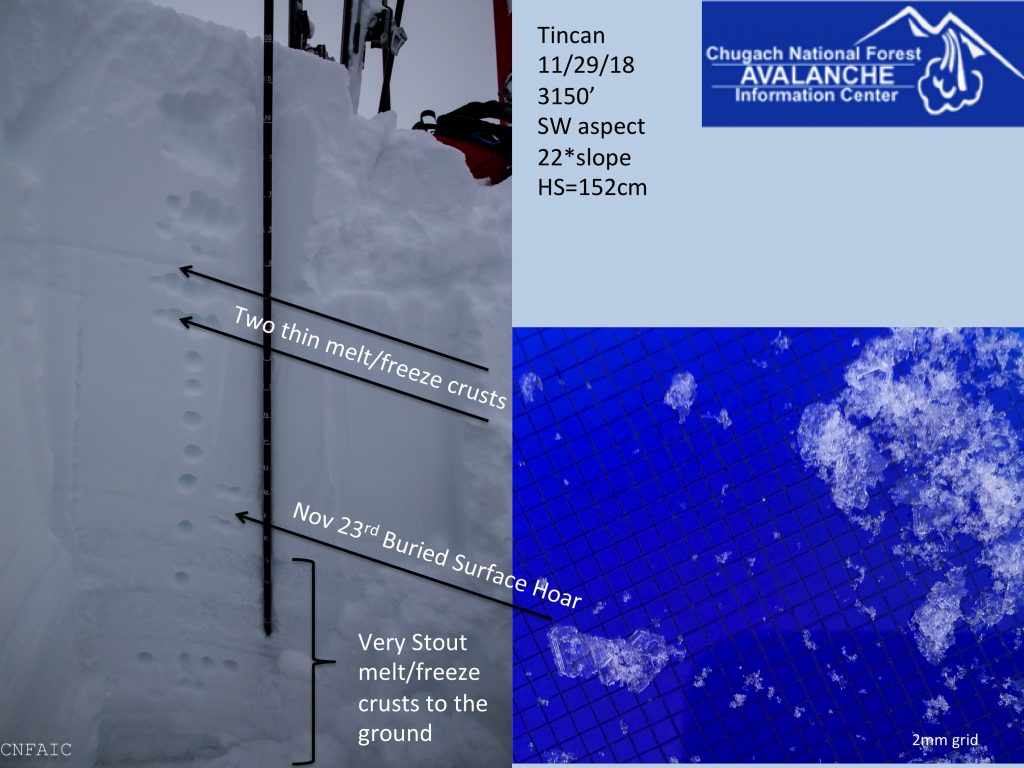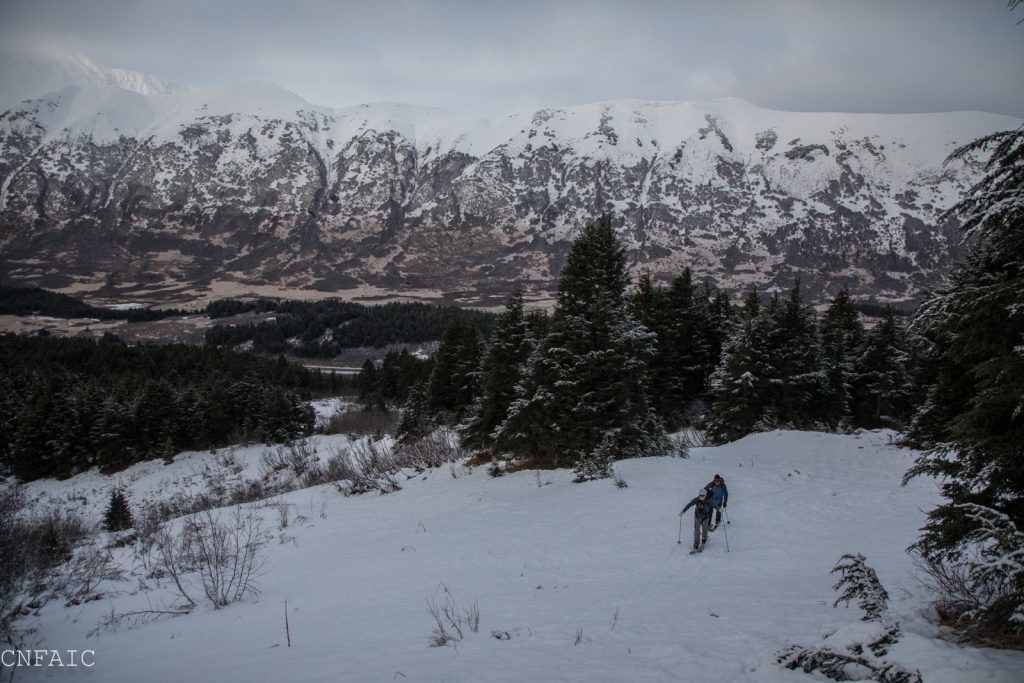Turnagain Pass
|
|
The avalanche danger is MODERATE above 2500′ where triggering a slab 1-3′ thick is possible on slopes steeper than 35 degrees. Be aware of changing weather and wind slabs forming late afternoon.
At treeline (below 2500′) the avalanche danger is LOW where a strong crust has formed and capped the snowpack.
The Friends of the CNFAIC have two scholarships dedicated to avalanche education. The funds generated to make these possible are in celebration of Rob Hammel and Amy Downing, their love and passion for the mountains, and to help others stay safe. We encourage you to read each one and apply if you fit the need, or pass along to someone who could benefit. Applications due on Dec 1st.
Rob Hammel Scholarship Fund €“ For recreational users and professional avalanche workers.
Amy Downing Scholarship Fund €“ For recreational users.



